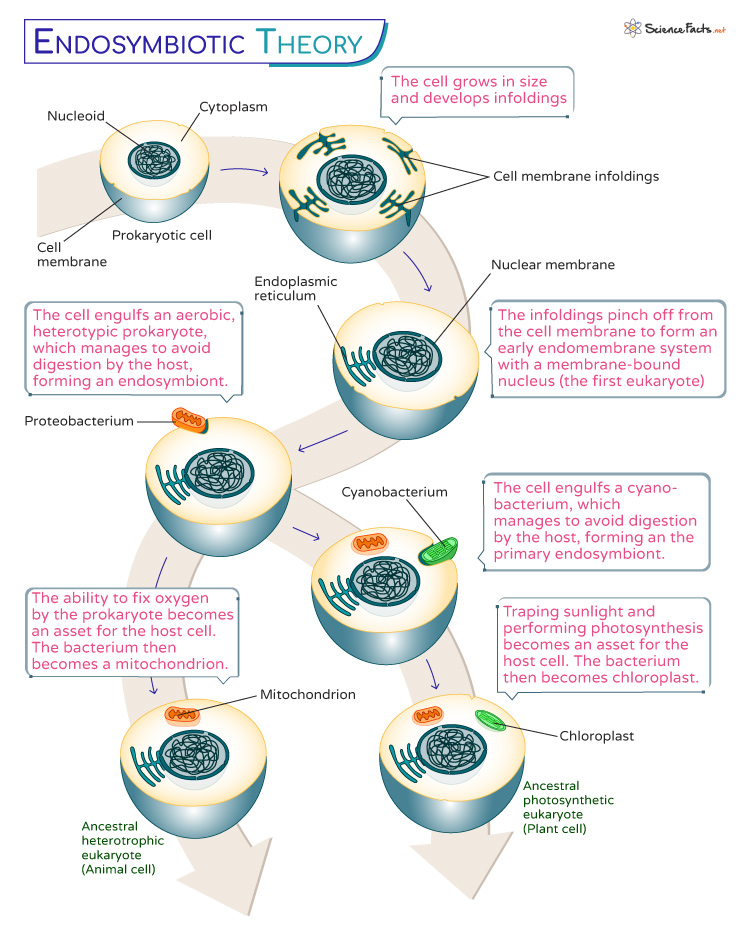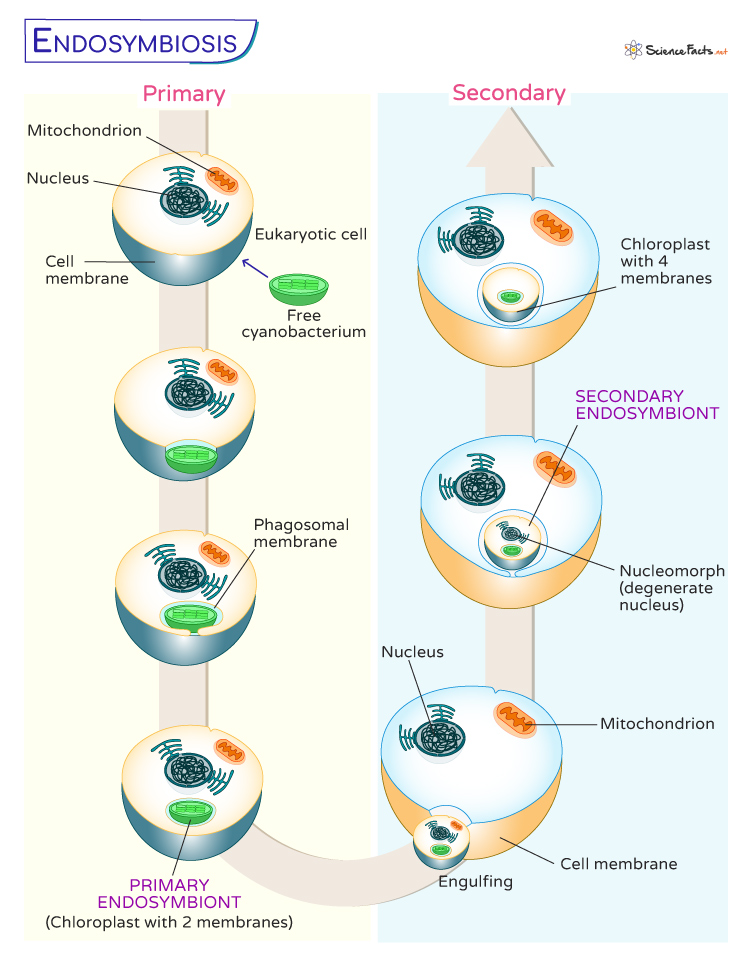The endosymbiotic theory explains that when one organism, typically a microbe, takes up residence within the cell of another organism, over time, they form a close relationship that can be advantageous for both partners. The larger host cell provides a protected environment and essential nutrients. At the same time, the internalized microbe contributes its specialized functions, often becoming an organelle within the host cell. The theory was conceptualized first by Konstantin Mereschkowsk in 1905 and then supported with evidence by Lynn Margulis in 1967.
The Theory of Endosymbiosis in Timeline
The Process of Endosymbiosis
Evidence that Supports the Endosymbiotic Theory
What is the Importance of the Endosymbiotic Theory
19th Century
In 1905, Russian biologist Konstantin Mereschkowski suggested that the origin of eukaryotic cells involved the engulfment of smaller prokaryotic cells.Around the same time, German botanist Andreas Schimper proposed that chloroplasts in plant cells might have originated from independent photosynthetic organisms.
1960s-1970s
In 1967, Lynn Margulis proposed that eukaryotic cells, with their complex structures and organelles, resulted from symbiotic relationships between ancestral prokaryotic cells. He argued that mitochondria, the cellular powerhouses, were once free-living bacteria capable of aerobic respiration. Similarly, she suggested that chloroplasts originated from photosynthetic bacteria that became incorporated into host cells.
1980s-1990s
Researchers discovered striking similarities between the DNA of organelles like mitochondria and chloroplasts and the DNA of modern-day bacteria.Protists like single-celled organisms are found to host certain bacteria fixing nitrogen (nitrogen-fixing bacteria).
2000s-Present
In the 21st Century, endosymbiosis forms the basis of the origin of mitochondria, chloroplast, and other organelles. It also explains the development of complex multicellular organisms and the coevolution of symbiotic partners.
1. Primary Endosymbiosis
It refers to the initial engulfment of a free-living bacterium by a host cell, creating a new organelle within the host cell. The most prominent examples of primary endosymbiosis are the origin of mitochondria and chloroplasts; both were once free-living cells. Here, two membranes surround the organelles; the inner is obtained from the bacterium, and the outer is derived from the host cell.
Origin of Mitochondria: A eukaryotic cell engulfed a bacterium capable of aerobic respiration. This bacterium provides a valuable energy source through respiration. Over time, the host cell and the engulfed bacterium developed a mutually beneficial relationship. The bacterium became the mitochondrion, retaining its own DNA and membrane structure while working in tandem with the host cell.Origin of Chloroplasts: Here, an ancestral host cell captured a photosynthetic bacterium, which could convert sunlight into energy through photosynthesis. As with mitochondria, a symbiotic partnership formed, with the photosynthetic bacterium evolving into the chloroplast. It allowed the host cell to harness the power of photosynthesis for energy production.
2. Secondary Endosymbiosis
It involves a eukaryotic cell engulfing another eukaryotic cell already undergoing primary endosymbiosis. This secondary engulfment results in a more complex cellular arrangement, leading to the diversification of eukaryotic lineages and the emergence of new types of organelles.
Formation of Plastids: These organelles involved in photosynthesis are found in various algae and plants. Different groups of algae have acquired plastids through secondary endosymbiosis, which consists of the engulfment of photosynthetic eukaryotic cells. In contrast to the two membranes of primary organelles, four membranes surround chloroplasts obtained by secondary endosymbiosis. In most cases, the nucleus of the engulfed cell disappears, with the remains of this nucleus still found lying between the two pairs of membranes. This structure is called a nucleomorph.
Thus, the endosymbiotic theory explains the presence of double-membraned organelles within protists. However, the statement that mitochondria and chloroplasts are much larger than prokaryotic cells does not support the endosymbiotic theory. The endosymbiotic theory also highlights how cooperation and symbiosis have played pivotal roles in shaping cellular evolution.

